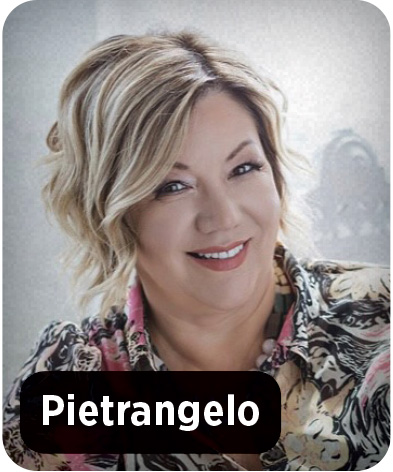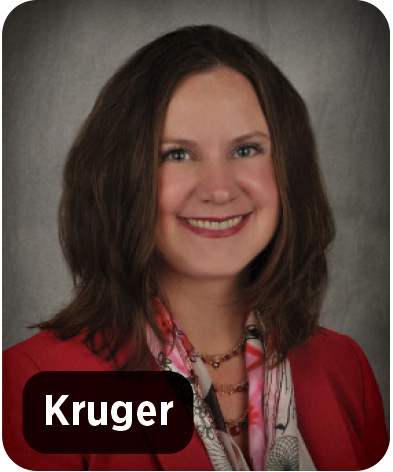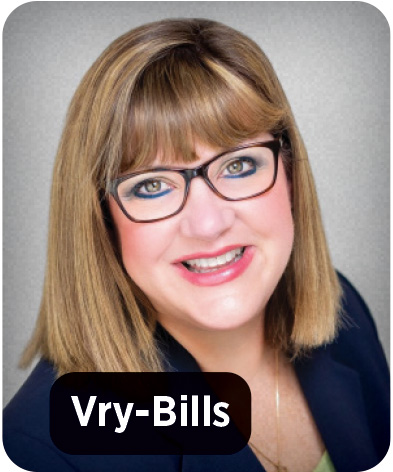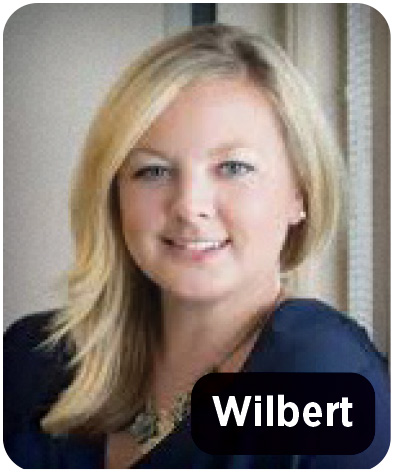Aging: How to help clients avoid a crisis

Over the 30 years she has been in the financial services business, Barbara Pietrangelo has grown up with many of her clients.
“I wouldn’t say I started out looking to serve the senior market, but I’ve been doing this for 30 years. So now I do have a lot of older clients,” she said. “In fact, my oldest client died last year at 104 years old.”

“It’s important to get to know the next of kin or the family member or whoever is going to help take care of them and help them make decisions as they get older,” she said. “A lot of my older clients still make very good decisions. But sometimes it’s good for them to have a second set of ears around. If you’re doing the right thing for your clients, it makes them feel good, but it also lets their family know you’re looking out for their best interests.”
With more Americans living longer — and often managing complicated health conditions along the way — it’s crucial for them to have an advisor to help them manage the maze of investment vehicles, protection products and care options that are available to them. And those who serve the senior market not only advise their aging clients, but they also advise the family members who might not be prepared to deal with their loved one’s financial and care needs.
When someone thinks of serving a senior client, they most often think about advising that older client about Medicare. But Pietrangelo said she no longer works in the Medicare market, referring that business to other advisors. What she focuses on is investment management and estate planning.
“I work with clients to make sure they’re invested in the right products, to make sure they won’t run out of money as they get older, and to make sure their tax issues are addressed,” she said.
Pietrangelo tells her clients, “If you call me in advance with questions, I can help you make good decisions about your money.
“But sometimes it’s hard for me to help you after you’ve made a decision that maybe isn’t so good. It’s much easier to talk those decisions ahead of time than it is to try to unwind things that aren’t so good.”
During her time in practice, Pietrangelo has seen the range of options to help senior clients fund their later years become more complex.
“And there is so much information out there that sometimes people become paralyzed in making decisions,” she said. “So, I try to make things easy and talk them through things, so they understand what they are doing and the implications of their decisions.”
Sometimes older clients fear making a change in the investments that they might have held for years, she said.
“We look at what they have and often we see that they could get a better rate of return by making a change, but they sometimes are reluctant to do that,” she said.
Anyone who wanst to advise the senior market “should be a good listener and involve the family members as well,” Pietrangelo said.
Getting family members to talk
Talking about money and discussing the “what ifs” of aging are taboo in many families. That is, until someone is faced with a situation where they are no longer able to care for themselves or live independently.

Kruger began her career as a social worker in a continuing care retirement community, where she was struck by how little families understood about paying for long-term care for a loved one.
“They thought Medicare would pay for everything. I would ask them whether their parents had long-term care insurance, veterans’ benefits, a reverse mortgage, were their funeral arrangements paid for — and the answer was always, ‘I don’t know. Our family never talks about stuff like that.’ Or they said they had tried to get that information from their parents but received so much pushback that they stopped asking.”
After spending 22 years working for care communities, Kruger founded her company 11 years ago.
“I created Care Right to solve all the problems I saw for 22 years,” she said.
Kruger said she believes families are not having the tough conversations around aging, and that the financial services industry as well as the health care industry must do a better job of educating people about the issues surrounding long-term care.
“People must talk about these issues proactively, not reactively — such as when Mom is in the hospital,” she said.
Kruger usually meets with clients and their family members together, virtually. This way, everyone can discuss their concerns and questions openly, and everyone is on the same page.
“The kids don’t have to take time from work or fly in and out to meet with me,” she said.
“We solve for families that need a neutral third party to facilitate family meetings. I help everyone understand the pros and cons of aging at home. I talk them through ways of paying for care. People need to understand that you must plan ahead so that someone doesn’t end up plunked into whatever care facility has an open bed when they need care.”
Kruger said the biggest problem she sees in her practice is that families wait until they are in the midst of a crisis before they seek advice.
“At that point, they have limited options and they have limited options that are good,” she said. “And by that time, family relationships are strained. There are always family dynamics that come into play at a time like this.”
She said most families who come to her for advice “are in total crisis mode.”
“They’re burned out, she said. “They’re overwhelmed. I’m doing family mediation while I’m helping them put a plan in place. I tell them, ‘Right now, we need to stay centered and focused on what Mom or Dad needs. We can address the family stuff later.’”
The crisis stage usually begins after a family member is discharged from a hospital but is unable to return home, she said. “At this point, they have 48 hours to come up with a plan, and they need help.”
Kruger said she wishes more individuals had long-term care insurance or hybrid life insurance that would help pay for care.
“The financial services industry has the same challenges that I do — denial. Nothing will ever happen to me. I will always be healthy.”
Much of her practice involves helping people face the reality of aging and then coming up with a plan to address that reality.
“Let’s be realistic about that. And then let’s put a plan in place. We ask our clients whether it’s important for them to have a say in what happens to them as they age and whether they want to retain as much independence and dignity as they can. Who’s going to say no to that?”
‘I’d better get some insurance’
The experience of having to provide care for an aging parent often prompts adult children to seek solutions to pay for their own future care, said Rhonda Vry-Bills. She is president and CEO of Long Term Care Strategies in Altoona, Iowa.

“No. 1, they’re either in crisis mode or in triage mode because they are dealing with parents who need help. They’re trying to figure out how they will manage their job and their family while having to delay using their parents’ resources and assets and ultimately having to put their parents in a facility and deal with Medicaid paperwork. So now they say, ‘I don’t want this to happen to my kids. I’d better get some insurance.’”
The other issue is that some people wait too long to plan. Then, at some point, they experience a medical crisis and are faced with the need for care. “They say, ‘I’d better get some insurance,’ but it’s a lot more difficult to do that when you have a medical history that doesn’t allow it.”
When Vry-Bills started her company, she dealt almost exclusively in traditional long-term care insurance. But she is seeing hybrid life insurance and annuities gaining traction.
“They offer what I call the perfect trifecta: you get tax-free benefits; depending on the policy, you can share it with a spouse; and if you don’t use it, there is a death benefit,” she said.
Short-term care policies are not as well known to consumers, but Vry-Bills said they can be a good alternative for someone who needs some coverage but can’t afford a longer-term policy.
Short-term policies provide coverage for one year or less. The majority of short-term care insurance policies have a 0-day deductible (elimination period) option and a full year of benefits. Simply, that means the policy pays on the very first day that someone qualifies for benefits. Short-term care policies can pay in addition to Medicare — something a traditional long-term care insurance policy is prohibited from doing.
Sometimes a client has assets that can be repositioned to help pay for care, and Bills said she helps them to move funds to pay for a qualified long-term care product.
“The reality is that we have so many more strategies today than we had 20 years ago,” she said.
Vry-Bills recommended that advisors who want to serve older Americans partner with a specialist who “knows the industry, knows the different products out there, and can help intertwine what the client needs and how to match up those puzzle pieces.”
Keeping up with Medicare changes
When you think about serving older clients, Medicare is usually the first thing that comes to mind.
The Centers for Medicare and Medicaid Services announced that beginning in 2025, Medicare Advantage beneficiaries will receive notifications in the middle of the calendar year that list all supplemental benefits they have not yet used.

“Medicare Advantage benefits have become so rich at this point, but people often don’t know they have these benefits to use,” she said. “CMS is pushing the carriers to further educate consumers on what they are paying for.”
In January 2025, people with Part D plans will find that they will not have to pay more than $2,000 in out-of-pocket costs. This policy is part of the Inflation Reduction Act of 2022.
As Medicare plans offer more choices, carriers enter and leave the market and the lists of in-network providers change from year to year, the role of the advisor in helping consumers make the right choice continues to be crucial, Wilbert said.
“People need a professional they can trust, who can walk them through everything and help them figure out their risk and what they can afford to pay,” she said. “People shouldn’t try to do this on their own.”





The insurance industry’s best-kept $5B secret — With TruStage’s Terrance Williams
Buying life insurance is not like buying a new car
Advisor News
- Americans fear running out of money more than death
- Caregiving affects ‘sandwich generation’s’ retirement plans
- Why financial consciousness is the key to long-term clarity
- Selling long-term-care insurance in a group setting
- How to overcome the fear of calling prospects
More Advisor NewsAnnuity News
Health/Employee Benefits News
- Low-income diabetes patients more likely to be uninsured
- UnitedHealth execs bemoan ‘unusual and unacceptable’ Q1 financials
- LTCi proves its value beyond peace of mind
- Governor signs ban on drug middlemen owning pharmacies
- The lighter side of The News: Political theater; A bone to pick with a Yankee; Health insurers have mascots?
More Health/Employee Benefits NewsLife Insurance News
- Americans fear running out of money more than death
- NAIFA eyes tax reform, retirement issues in 2025
- Legislation would change tax treatment of life insurers’ debt investments
- Closing the life insurance coverage gap by investing in education
- IUL sales: How to overcome ‘it’s too complicated’
More Life Insurance News